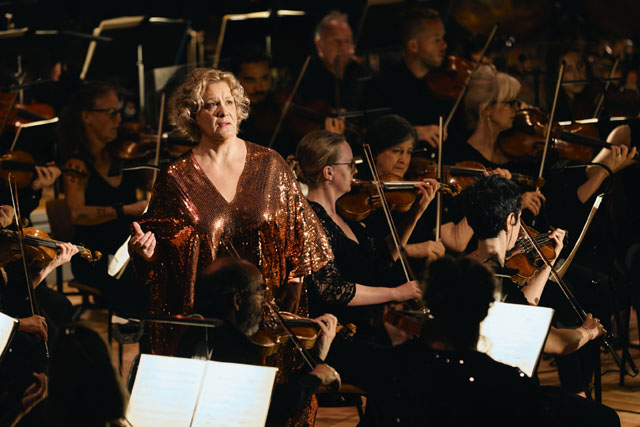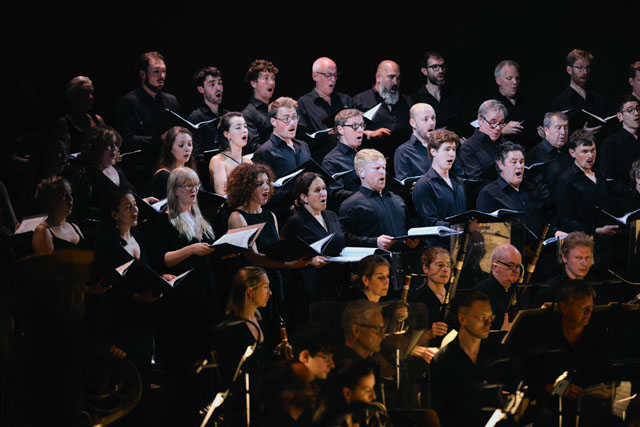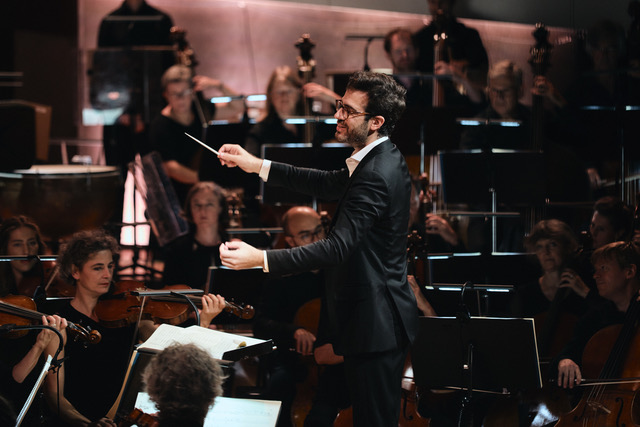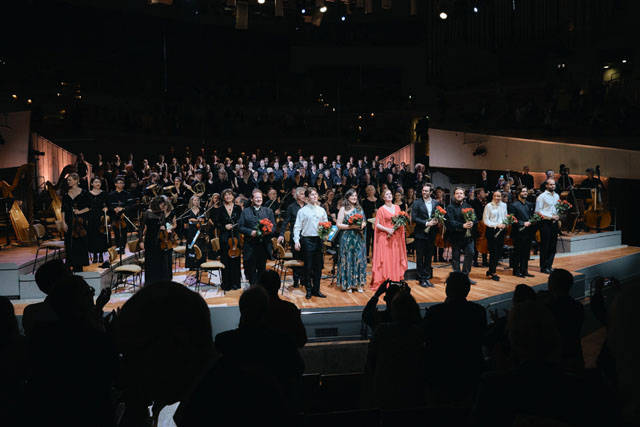![]()
2023
This page presents reviews of the performances that took place in 2023. We would like to express our gratitude to the authors for their invaluable contributions.
Copyright notice: The reviews published on this page are the intellectual property of the respective contributors and are subject to UK and International Copyright Laws. Their use/reproduction without the authors’ explicit permission is illegal.
|
Anja-Rosa Thöming
The Monteverdi Choir as an internationally renowned choir is unlikely to falter; but what about the Orchestre Révolutionnaire et Romantique (ORR)? Both are closely associated with the name of their founding conductor Sir John Eliot Gardiner, and he has cancelled all performances until the end of the year. He had to do it after losing his temper and punching an opera singer during the intermission on the first night of a concert tour with Hector Berlioz’s Les Troyens. Even though the tour went on successfully, the damage is great, not least for the music. And will there be enough performance opportunities in the future for the ORR, supported by King Charles, even without its famous “spiritus rector” Gardiner?
The eighty-year old conductor has rendered great service to Berlioz; indeed, he seemed to identify with the misunderstood composer-writer, as his younger colleague François-Xavier Roth once remarked. Despite the incident in La Côte St. André, the ambitious European tour in August was a memorable event because those involved “stuck with it” with professionalism and enthusiasm for the cause, and because Dinis Sousa, the Monteverdi choir and ensembles’ associate conductor, who knows the work very well, was able to take over and conduct with complete authority.
With energetic charisma, the Portuguese born Sousa led the musicians to passionate expression and musical precision: the unabridged performance of Les Troyens earned great applause in the Berlin Philharmonie. Although the number of musicians was not quite as Berlioz had intended — only three harps were included instead of six — the idea of class instead of mass produced a result worth hearing.
The Monteverdi choir interpreted the demanding choral part in Les Troyens almost perfectly. Whether Trojans, Greeks, soldiers, maidens, sailors, mothers — the choristers understood their roles individually and yet formed a precise and powerful choral sound that was a joy to hear. In the Trojans’ hymn of thanks, Dieux protecteurs de la ville éternelle (You gods who protect the eternal city of Troy), they presented the archaic nature of the situation in an overwhelming unison sound and at the same time followed Berlioz’s dynamic gradations exactly: the force of the soaring unison in Dieu de l’Olympe (God of Olympus) contrasts with the tonally subdued, carefully phrased and articulated Dieu des Mers (God of the Seas); man’s respect for the gods becomes palpable. It was not only at this moment that Gardiner’s “good” musical spirit was present.
The grandiose quality of the women’s choir unfolded in the hauntingly beautiful lament Ah! Puissante Cybèle, / Déesse immortelle, / mère des malheureux (Mighty Cybele, immortal goddess, mother of the unfortunate). Almost all the Trojan women allow themselves to be persuaded by the prophetess Cassandra to kill themselves rather than surrender to the victorious Greeks. The theatrical liveliness of the singers of the Monteverdi Choir almost made one feel transported to a London Prom concert.
To translate the richness of the score’s timbre into real sound, the orchestra has borrowed saxhorns from a French collector, those instruments built by Adolphe Sax for the French army. As a sound pioneer Berlioz was keen on the exotic appeal of the saxhorns as they charge individual scenes with special meaning, such as the famous pantomime music, the Royal Hunt and Storm at the beginning of the fourth act.
Although the strings played with great imagination, the wind instruments were the secret heroes of the performance. The magical sound of stopped horns characterising the eerie scene between Enée (Aeneas) and the ghost of Hector was compelling; it can be understood as a homage to the ghost scene in Hamlet (Berlioz very much thought of a “Shakespearean style” for Les Troyens). The noble, darkly luminous timbre of the clarinet gives voice to the mourning Andromache. The clarinet also “mourns” when Enée takes an emotional farewell to his son; clarinettist Fiona Mitchell creates this moment of heartfelt fatherly love with great musicality.
The vocal soloists show great form in Berlin. Michael Spyres as Énee seems slightly phlegmatic despite or because of his reliably appealing tenor voice (he already sang the challenging part for the 2017 Erato recording under John Nelson and alongside Joyce DiDonato). But he provides the ideal musical partner for Paula Murrihy (Didon), especially in the duet Nuit d’ivresse: as the conductor sets a flowing but rather calm tempo, both voices unfold beautifully and at the same time lightly in the ornaments and mutual entwinements. Mezzo-soprano Paula Murrihy as Queen of Carthage resembles Lady Diana in type and combines exemplary vocal technique with expressiveness, which she magnificently enhances in the tragic final scene Je vais mourir.
Alice Coote as Cassandre seems vocally sovereign, but she lacks the decisive element to embody the unhappy Cassandra who foresees misfortune: the turmoil between youthful longing and grief over the coming doom, as composed in the scenes with her beloved Chorèbe. The discovery of the evening in the Carthage part is Beth Taylor as Dido’s sister Anna. Every duet with her becomes a musical event, as she brilliantly displays her singing finesse with a pithy, agile contralto; she can also make the audience smile with a raised eyebrow. The lyrical tenor of Laurence Kilsby is wonderful, with two tenderly melting arias; one senses how he grew up as a “Chorister”, every phrase is placed and the eyes sing along.
Anja-Rosa Thöming
Alice Coote (Cassandre)

© Fabian Schellhorn / Berliner Festpsiele
The Monteverdi Choir

© Fabian Schellhorn / Berliner Festpsiele
The clarinettist Fiona Mitchell is on the left in the lower half of the picture, just under the choir, with the 4 bassoon players to the right
Dinis Sousa

© Fabian Schellhorn / Berliner Festpsiele
Final curtain call

© Fabian Schellhorn / Berliner Festpsiele
At the front of the stage, from left to right: Lionel Lhote (Chorèbe), Laurence Kilsby (Iopas & Hylas), Beth Taylor (Anna), Paula Murrihy (Didon), Dinis Sousa, Michael Spyres (Énée), Adèle Charvet (Ascagne), Alex Rosen (Narbal & L’ombre d’Hector), Ashley Riches (Panthée)
![]()
The Hector Berlioz Website was created by Monir Tayeb and Michel Austin on 18 July 1997; Reviews of live performances page created in 1999; completely reorganised on 25 December 2008.
© Monir Tayeb and Michel Austin. All rights of reproduction reserved.